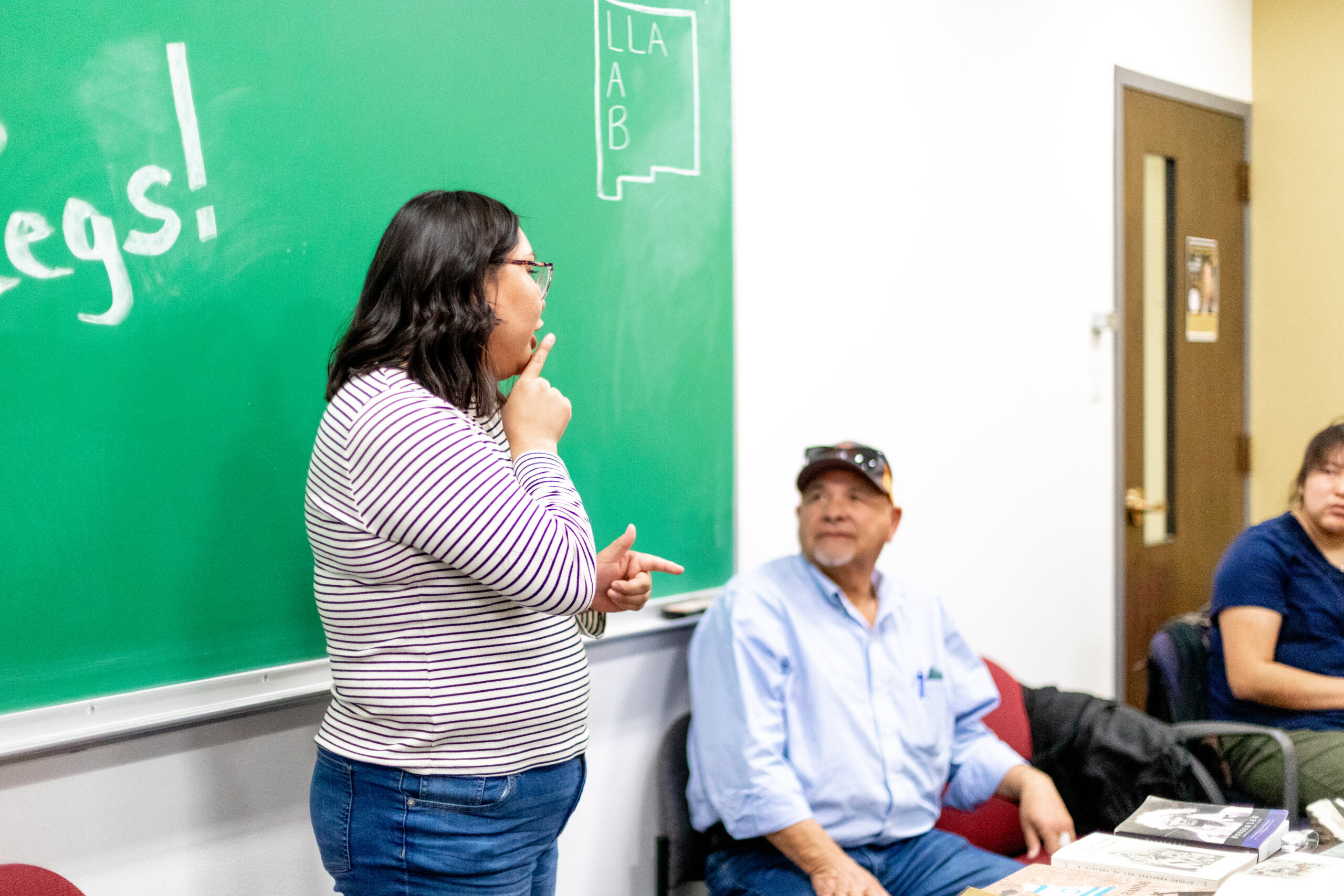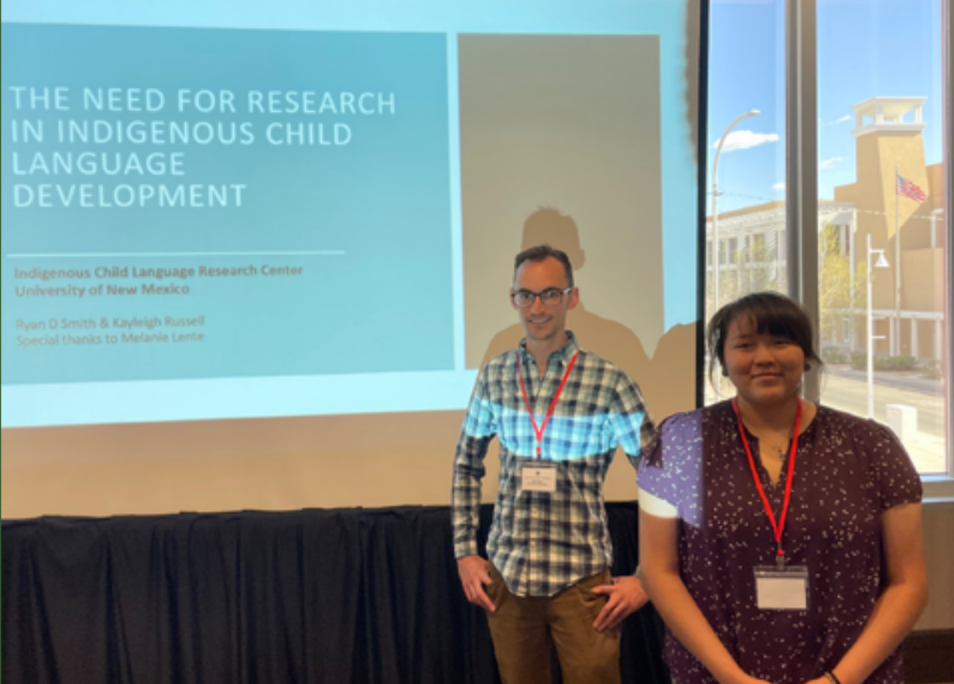Research Projects
 Pueblo Hand Talk
Pueblo Hand Talk
Dr. Jill Morford and her team received a 2025-2026 Community-Based Research Award from UNM’s Center for Regional Studies to support their project Pueblo Hand Talk: As Old As the Spoken Word. Dr. Morford works with lab members Melanie Kirk-Lente, Kayleigh Russell and La Ban Hendricks and signers from the Zia Pueblo to document Indigenous ways of signing that predate ASL.
Bilingualism and cognition
LLA Lab is taking part in an exciting three-year experimental research project titled “Addressee effects in demonstrative systems across bilingual communities”. Led by Dr. Naomi Shin and Dr. Rosa Vallejos-Yopán of UNM and Dr. Amalia Skilton of the University of Edinburgh, this research is funded by a National Science Foundation grant.
Data are being collected from three bilingual communities. These include Secoya-Spanish and Ticuna-Spanish bilinguals in the Amazon, and Spanish-English bilinguals in New Mexico. The study seeks to understand how bilinguals’ cognition is affected by their dual linguistic systems by investigating how speakers use demonstratives (such as “this” and “that” in English) in different contexts and in both their languages. All languages have demonstratives, but they vary in how many exist and how they are used.

Indigenous child language
Directed by Dr. Melvatha Chee, the Indigenous Child Language Research Centerfocuses research on language revitalization.
The Shiyázhí Yáłti' project is based on audio recordings of child speech production, collected from children ages 4-11. Current work revolves around coding and analyzing these recordings. Future work will concern child-directed speech as well.
The Indigenous Child Language Research Center is also collaborating with Saad Kʼidilyé, a Navajo language nest located in the city of Albuquerque. As a community-oriented project with the goal of developing a better understanding of childhood acquisition of Diné Bizaad, it investigates the speech of adults talking to children in the nest, as well as the first words and gestural communication of those same children.

